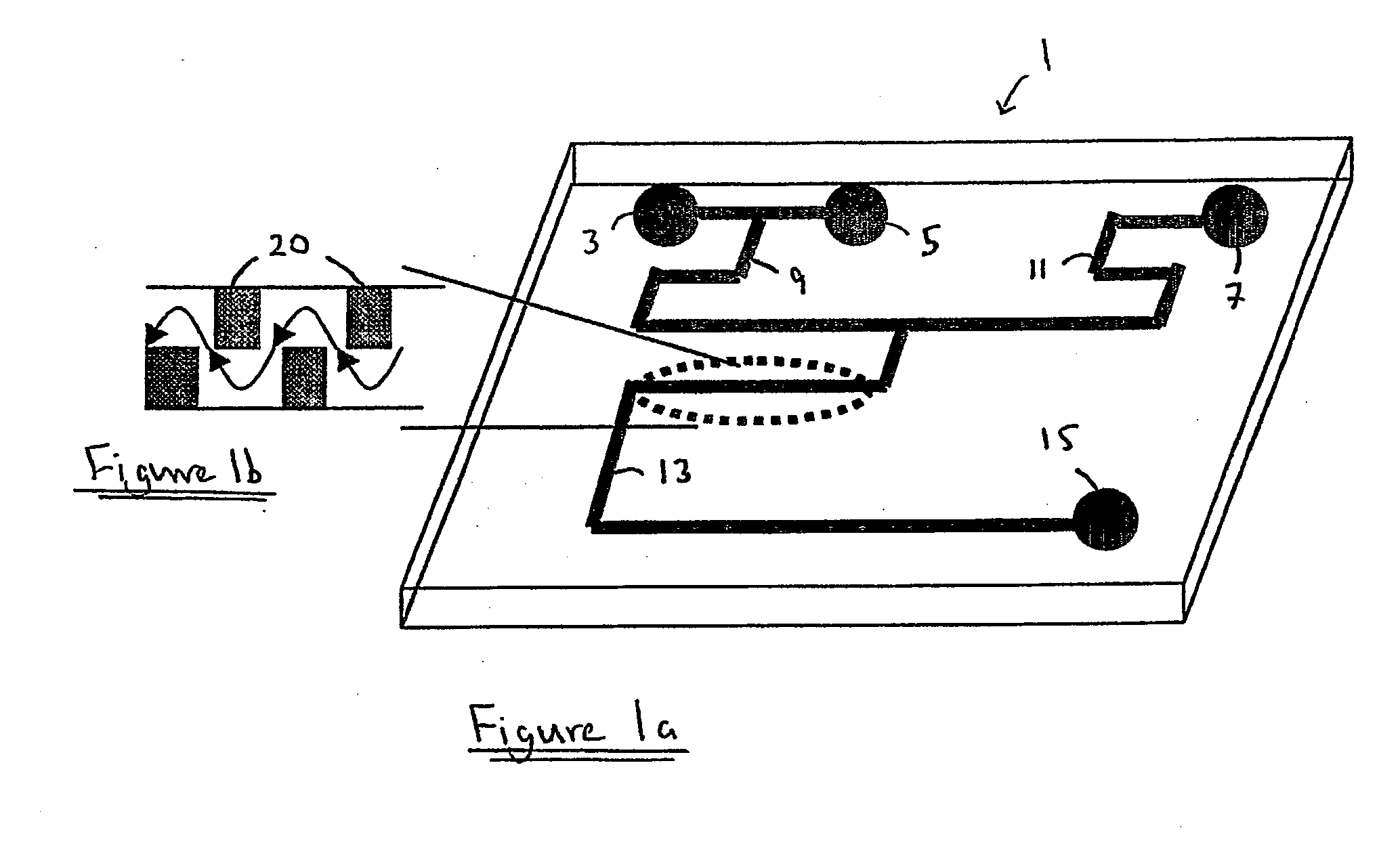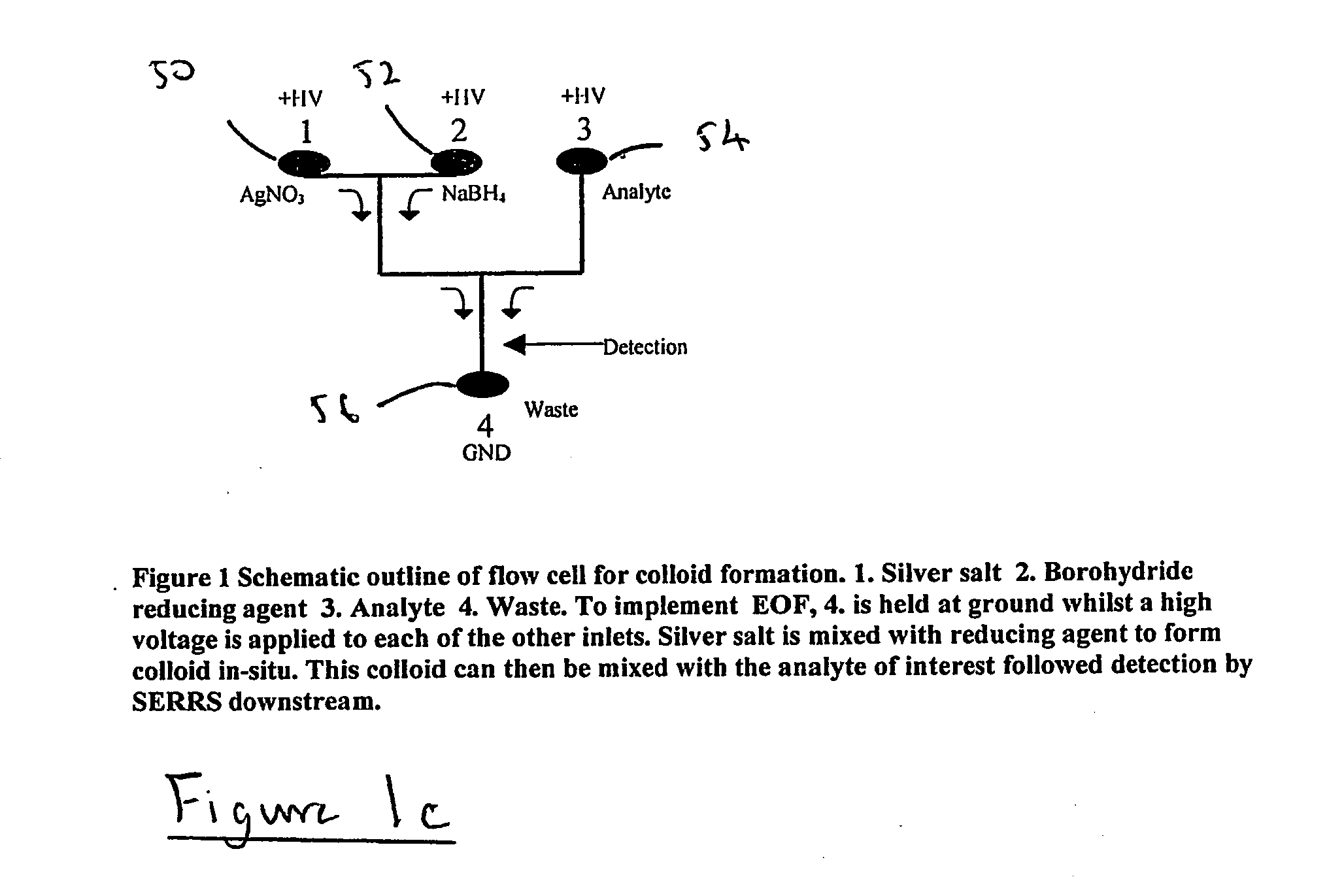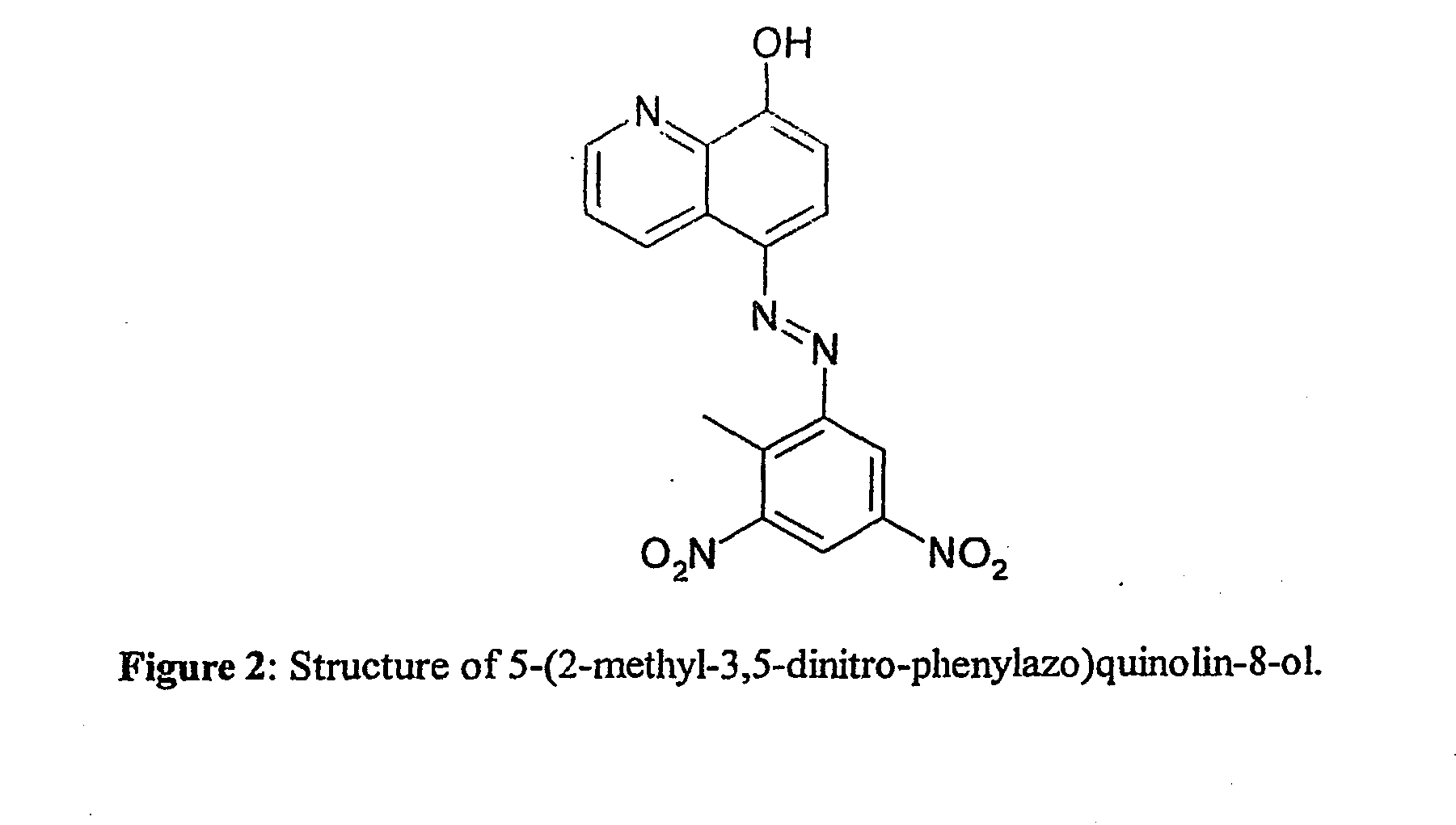Microfluidic ser(r)s detection
a microfluidic and ser(r) technology, applied in the field of microfluidic, can solve the problems of macro-flow cell based systems, difficult to produce reproducible serrs substrates, and generally not being able to take samples, and achieve the effect of effective code based particles and easy identification
- Summary
- Abstract
- Description
- Claims
- Application Information
AI Technical Summary
Benefits of technology
Problems solved by technology
Method used
Image
Examples
example 1
Device Fabrication
[0073] The fluid channel was fabricated by a standard photolithographic technique. S1818 photoresist (Shipley Europe, Coventry, UK) was spin coated on an acid cleaned 1.5 mm thick soda lime glass (Soda Lime glass, Nanofilm, USA) at 4000 rpm for 30 seconds. The glass was baked on a 90° C. hot plate for 3 minutes, followed by UV exposure through an acetate sheet lithography mask to define the channel pattern for 8 seconds. The photoresist was developed in a mixed solution of 1 part of Microposit Developer Concentrate (Shipley Europe) and 1 part of RO water for 35 seconds and dried with nitrogen. The substrate was then baked on a 90° C. hot plate for 15 minutes to ensure all the solvent had been evaporated and to harden the photoresist. Finally, the glass was wet etched in a mixed solution of 1 part of hydrofluoric acid and 4 parts of RO water for 15 minutes, resulting in 30 μm deep and 250 μm wide channel. After the etching procedure, the glass was ultrasonicated in...
example 2
Use of the Device and SERRB Detection
[0077] Sodium borohydride (99%), silver nitrate (99.9999%) and sodium hydroxide (97%) were purchased from Aldrich (Dorset, England). An aqueous solution of silver nitrate (2.6×10−3 M) and a solution of sodium borohydride (1.1×10−3 M) in sodium hydroxide solution (0.1 M), were introduced into inlets 3 and 5 respectively using a micropipette. The azo dye solution, which was prepared in methanol, was introduced into inlet 7. The chosen analyte was an azo dye, 5-(2-methyl-3,5-dinitro-phenylazo)quinolin-8-ol, synthesised as part of a program to detect trinitrotoluene (TNT) by derivatisation methods. It was analysed by nmr and C,H and N analysis and found to be pure (C was within 0.4%). The structure of the dye is shown in FIG. 2.
[0078] The solutions were pulled through the system under vacuum using a syringe attached to outlet 15. Spectra were accumulated by focussing the laser on the colloid stream using a ×10 objective lens. Accumulation times wer...
example 3
Coded Nanoparticles for Detection of DNA by SERRS
[0093] Here it is shown that a labelled oligonucleotide can be detected with three other dyes in a suspension of nanoparticles indicating the ability to provide a coded nanoparticle for identification of a particular sequence in a mixture of DNA fragments.
[0094] The oligonucleotide examined contained a basic priming sequence of 5′ GTG CTG CAG GTG TAA ACT TGT ACC AG 3′. The visible chromophore used was the fluorophore 2,5,2′,4′,5′,7′-hexachloro-6-carboxyfluorescein (HEX), which was attached at the 5′ terminus. HEX is negatively charged and therefore repels the negatively charged metal surface. Surface attachment was achieved by the incorporation of positively charged modified nucloebases at the 5′-terminus next to the HEX label. The three dyes used were azos containing the benzotriazole group for surface attachment.
[0095] All spectra were acquired in a Renishaw 2000 Raman Microprobe with a charge-coupled device (CCD) spectrometer. T...
PUM
| Property | Measurement | Unit |
|---|---|---|
| Flow rate | aaaaa | aaaaa |
| Size | aaaaa | aaaaa |
| Shape | aaaaa | aaaaa |
Abstract
Description
Claims
Application Information
 Login to View More
Login to View More - R&D
- Intellectual Property
- Life Sciences
- Materials
- Tech Scout
- Unparalleled Data Quality
- Higher Quality Content
- 60% Fewer Hallucinations
Browse by: Latest US Patents, China's latest patents, Technical Efficacy Thesaurus, Application Domain, Technology Topic, Popular Technical Reports.
© 2025 PatSnap. All rights reserved.Legal|Privacy policy|Modern Slavery Act Transparency Statement|Sitemap|About US| Contact US: help@patsnap.com



